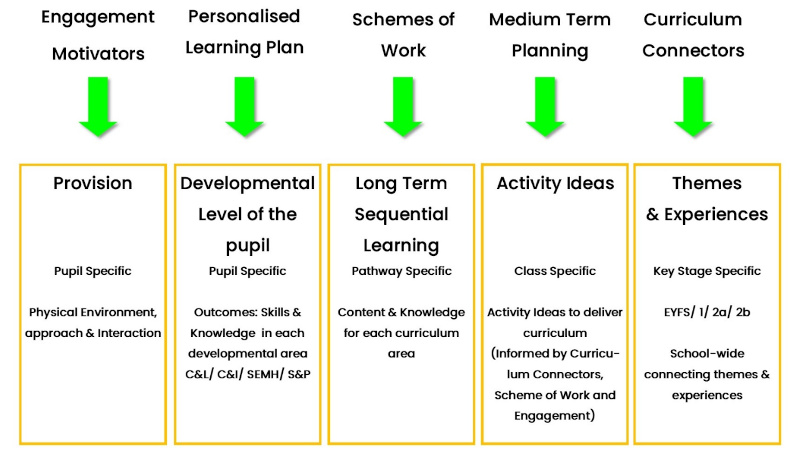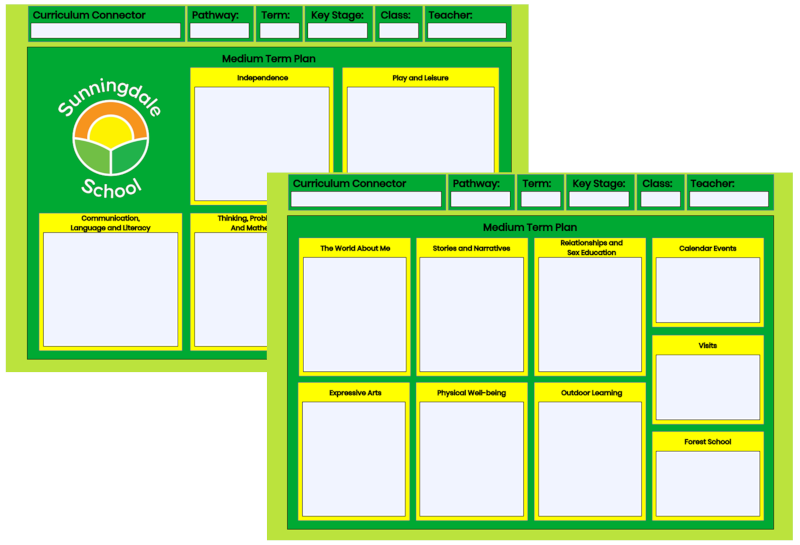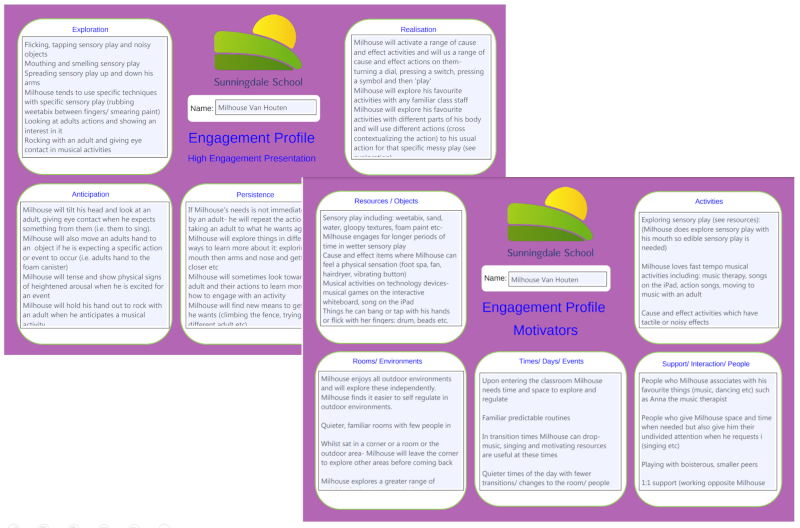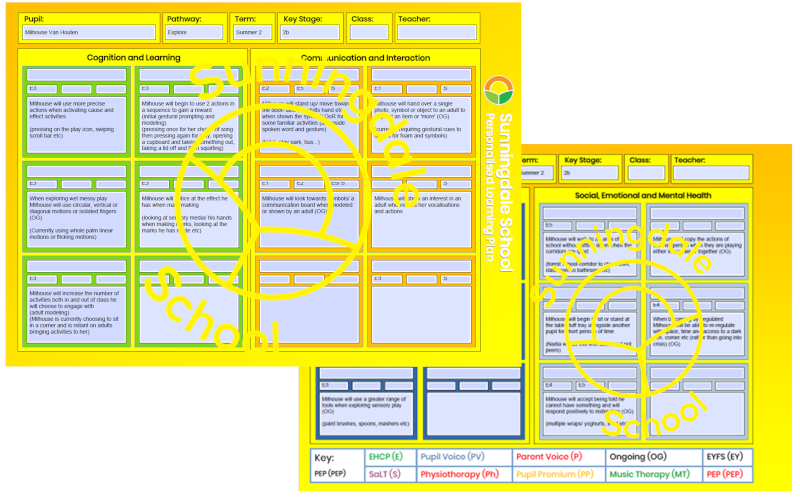

Curriculum Connectors
Classroom teaching is delivered via child centred planning based around the breadth and targeted content of the child’s Personalised Learning Plan (PLP).
Content and activities are presented under the ‘umbrella’ of broad Curriculum Connectors (themes) that are able to be adapted and differentiated to the needs and interests of all learners. They are broad, open to multiple interpretations and are quasi-abstract. Connectors are used across Key Stages and are changed half termly. These connectors do not repeat specifically although they do overlap and build on one another throughout the school; reinforcing, broadening and extending learning and experiences.
Medium term class plans are tailored to the needs of the specific class, adapting the learning areas and opportunities to their interests, needs and level of learning.
Weekly and daily planning is not expected in a specific format but can be used by teachers to support the point of learning of individual pupils and is very adaptable to changes in pupil’s needs, their interests and changing experiences.

Engagement Profile & Motivators
Qualitative recordings of pupil’s engagement in the areas of Initiation, Persistence, Anticipation, Exploration and Realisation are made regularly and used to build up a picture of how developed each of these are for ALL pupils.
Alongside this, we also record pupil’s motivators in terms of Activities, Resources, Environments, Levels of Support and Times of the Day in order to create overall teaching environments and approaches that create the maximum potential for learning for individual pupils.

This information is recorded in as much depth as is possible. For example, the specific motivating ‘activity’ for the pupil may be recorded initially but, over time, as this becomes better understood, deeper information about the nature of the activity or resource will be recorded so that this can be duplicated across other activities, resources or environments. If we understand at a schematic, process or sensory level a pupil’s most motivating activity, resource, environment, level of support and time of day, then we can combine that information to create the optimum conditions for encouraging initiation, facilitating exploration, developing persistence and ultimately scaffolding the child’s realisation or cross contextualisation. This also underpins our assessments of progress as we believe that:
Without engagement, there is no deep learning, effective teaching, meaningful outcome, real attainment or quality progress (Hargreaves, 2006; Carpenter, 2010).
Personalised learning plans
The pupils that attend Sunningdale School are individuals. Each child that attends the school may be here for a variety of reasons related to their Cognition and Learning; Communication and Interaction; Physical and Sensory needs or Social, Emotional and Mental Health needs. No two children that attend Sunningdale School have difficulties that manifest and impact on their development in an identical way. As such pupils are planned for and taught at Sunningdale School in a highly personalised way, using Personalised Learning Plans that cross reference and interact with a variety of educational, therapeutic and curriculum documentation and approaches. Pupil’s Personalised Learning Plans directly link back to their Education, Health and Care plan (EHCP), demonstrating the golden thread that runs through each individual pupils’ education right back to their aspirations.

Curriculum Subject Areas
Each pathway has defined curriculum subject areas that are closely matched to the developmental needs of the learners accessing that pathway, enabling them to develop the appropriate baseline level of knowledge, understanding and the skills required to access the next pathway approach or to prepare them for life beyond the school, secondary school and adulthood. These are coherently planned and sequenced towards cumulatively sufficient knowledge to build on prior learning and prepare pupils for their next steps. Strong links are made with Preparation for Adulthood (PfA) outcomes and Independence builds cumulatively towards supporting these: Employment, Independent Living, Community Participation, Friendships & Relationships.
You can read our Subject Overview Documentation here:
References
Carpenter, B. (2010) A Vision for the 21st Century Special School (Complex Needs Series 1). London: SSAT.
Equals (2021) Curriculum. Available at https://equals.co.uk/
Hargreaves, D. (2006) Personalising Learning 6: The final gateway: school design and organisation. London: SSAT.